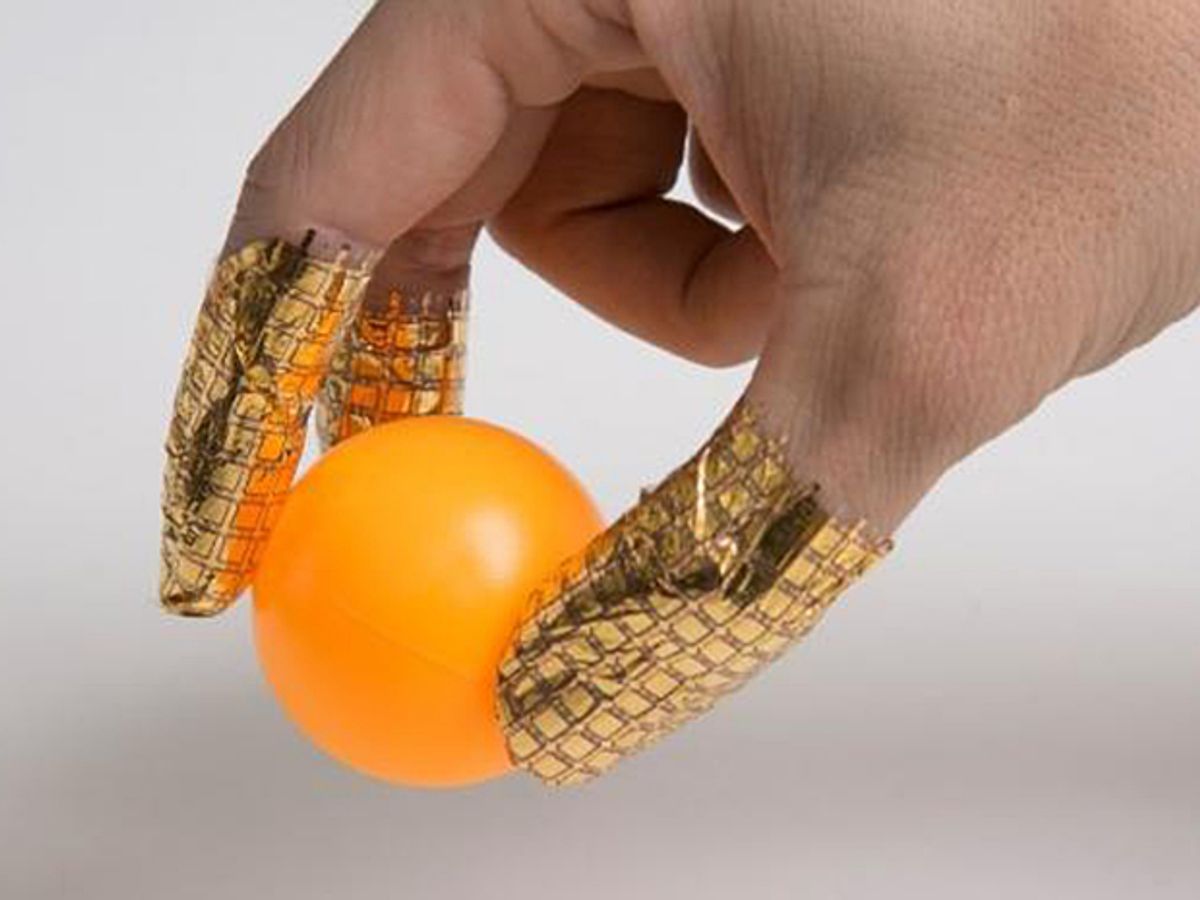Research has shown that nanofibers can be fashioned into a pretty effective flexible pressure sensor. We have also seen carbon nanotubes structured into pyramid shapes or just sprayed over silicone to produce flexible pressure sensors.
Now an international team at the University of Tokyo has produced nanofibers made from a mix of carbon nanotubes and graphene that overcomes a big problem facing flexible pressure sensors—that they lose their accuracy after being bent or deformed. The resulting pressure sensor could be used to better detect breast tumors, its inventors suggest.
Sungwon Lee and Takao Someya at the University of Tokyo note that although there are many groups applying flexible electronics to implantable and wearable devices, many of the resulting sensors were not suitble for measuring real objects because they were too sensitive to the distortion of the materials. [See Someya's article "Bionic Skin for a Cyborg You" for an in depth look at the quest for flexible skin-like sensors.]
In a kind of “Catch 22”, highly sensitive pressure sensors depend on conformal contact with a surface—the property that made them more sensitive to bending unfortunately caused them to lose accuracy. What this means in practice is that when a soft object presses against another soft object the pressure cannot be measured separately from the mechanical stress.
What Lee and his colleagues wanted to address was to find a way to measure pressure even under the most extreme bending conditions.
In research described in the journal Nature Nanotechnology, the engineers fabricated their flexible sensor using organic transistors and pressure sensitive nanofiber structure.
The researchers fabricated the nanofibers with diameters ranging between 300 to 700 nanometers by adding carbon nanotubes and graphene to a flexible polymer. The nanofibers entangled with each other to form a thin, transparent structure.
The key to these fibers not losing their accuracy in measuring pressures is their ability to change their relative alignment to accommodate the bending. This allows them to continue measuring pressure because it reduces the strain in individual fibers.
The resulting sensor—which is only eight micrometers thick—can measure pressure distribution of a rounded surface so that it can effectively measure pressure at 144 locations at the same time.
"We've also tested the performance of our pressure sensor with an artificial blood vessel and found that it could detect small pressure changes and speed of pressure propagation," said Lee in a press release.
Dexter Johnson is a contributing editor at IEEE Spectrum, with a focus on nanotechnology.



